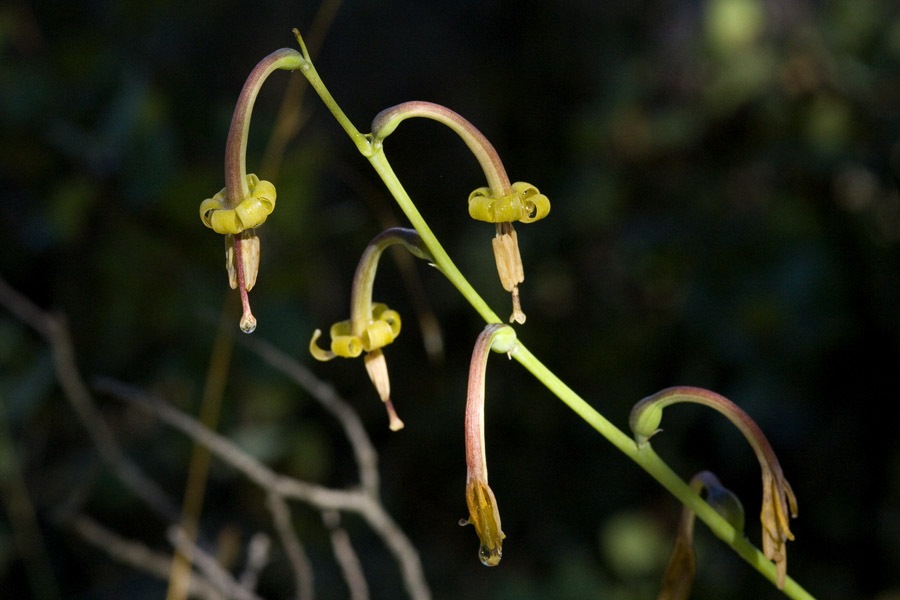
|
Family: Asparagaceae |
Plants perennial, scapose, rhizomatous; rhizomes upright, globose, or cylindrical. Roots fleshy or fibrous. Stems subterranean. Leaves in rosettes, flexible, thin or succulent; blade linear-lanceolate to oblanceolate, often glaucous, sometimes mottled, base membranous [fibrous in species of s Mexico], margins entire, papillose, or dentate, with cartilaginous teeth, apex a soft point. Inflorescences racemose or spikate, bracteate; proximal flowers occasionally pedicellate. Flowers usually solitary at node, nocturnal; tepals connate basally into tube, green, sometimes tinged with brown, or pale yellow, or white to pink; perianth tube narrowly to broadly funnelform; limb lobes erect or recurved, oblong; stamens 6; filaments inserted on tube, in bud straight or bent, usually exserted at anthesis; ovary inferior; style usually exserted at maturity; stigma capitate, 3-angled and furrowed, or 3-lobed with lobes reflexed. Fruits capsular, globose to cylindrical, dehiscence loculicidal. Seeds flat, triangular, 0.3-0.6 cm on radial margins. x = 30. Most Manfreda species occur in Mexico. All species grow in rocky or sandy ground, frequently on slopes. At anther maturity, the style is shorter than the filaments, or bent downward away from the anthers. By stigma maturity on the third day, the style has elongated (and straightened). Manfreda has been included in both Agave and Polianthes in other floras.
|
This project was made possible in part by the Institute of Museum and Library Services [MG-70-19-0057-19].
Powered by Symbiota



